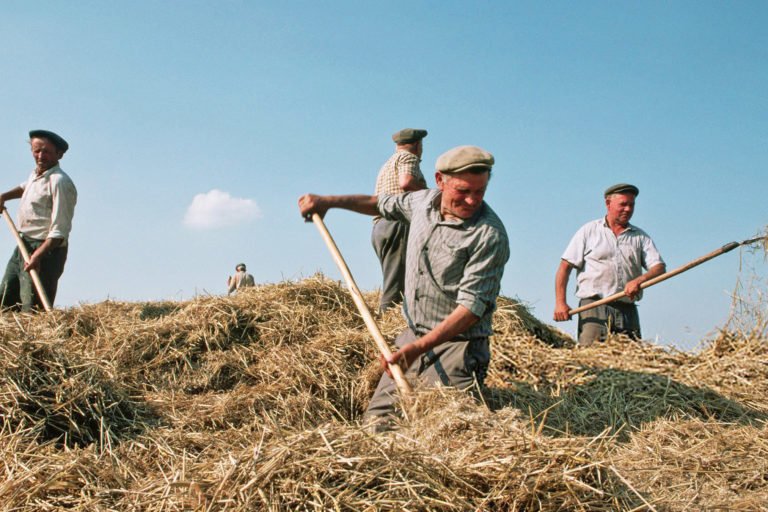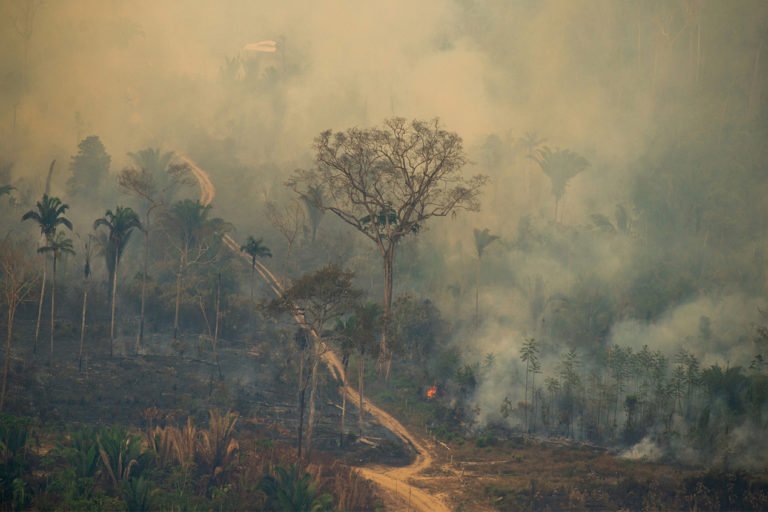- The Ulu Muda rainforest is one of the last large, continuous tracts of forest in the Malay Peninsula, providing vital habitat for countless species as well as water for millions of people in northern Malaysia.
- Satellite data indicate deforestation activities are intensifying in the greater Ulu Muda landscape, including in protected areas such as Ulu Muda Forest Reserve.
- Sources say the forest loss is likely due to legal logging.
- Conservationists worry that the loss of Ulu Muda rainforest will have detrimental impacts on the region’s biodiversity and water security, as well as contribute to global climate change.
Spanning more than 1,600 square kilometers (620 square miles), the Ulu Muda rainforest is one of the last large, continuous tracts of forest in the Malay Peninsula, and provides vital habitat for countless species as well as water for millions of people in northern Malaysia. But deforestation, due in large part to logging, is threatening to fracture the Ulu Muda landscape – and satellite data indicate forest loss has been gaining speed in 2022.
Between 2002 and 2021, the greater Ulu Muda landscape lost 82.8 square kilometers (32 square miles) of humid primary forest, according to satellite data collated by the University of Maryland (UMD) and visualized on Global Forest Watch. This is equivalent to nearly 6% of Ulu Muda’s primary forest, with 2019 seeing the highest amount of deforestation in any single year since measurement began in 2002, with 11.6 sq. km. (4.48 sq. mi.) lost. The data also show some success stories, with deforestation declining dramatically between 2019 and 2020 after a temporary ban on logging was announced in 2018.
Forest loss has still continued in recent years, albeit at a lower rate. However, UMD satellite data show that forest clearing activities began ramping back up in April 2021, and preliminary data for 2022 indicate forest loss has continued to intensify this year.
According to UMD data, much of the recent clearing of Ulu Muda rainforest is occurring inside Ulu Muda Forest Reserve (UMFR), the landscape’s largest protected area. Forest loss is also happening within Padang Terap Permanent Reserved Forest, and is likely due to approved logging, a representative of Malaysia-based forest data platform Hutanwatch told Mongabay in an email.
According to Hutanwatch, a total of 47.26 sq km (18.25 sq mi) of Padang Terap Permanent Reserved Forest is designated “Forest timber production under sustained yield” by Schedule I of Malaysia’s National Forestry Act, which means that logging activities are legal in that portion.
Ulu Muda: An indispensable water catchment
Mageswari Sangaralingam, senior research officer of NGO Sahabat Alam Malaysia (or Friends of the Earth Malaysia), told Mongabay that the greater Ulu Muda landscape supplies water for irrigation to what is considered Malaysia’s “national rice bowl.”
“80 percent of the water source for Penang comes from the UMFR,” Sangaralingam said. “This is not only for domestic use, but also for agricultural and industrial purposes. Even for the state of Kedah, it is a granary area.”
Comprising 1,064 sq. km. (411 sq. mi.), UMFR and the surrounding greater Ulu Muda Landscape is the largest water catchment (also referred to as a watershed) in northern Malaysia. Water originating in the hilly rainforest and collected in the Muda, Pedu, and Ahning reservoirs are critical in meeting the water needs of the states of Perlis, Kedah and Penang, serving an estimated population of 4.09 million people, according to Sangaralingam.

“Recently, the Kedah state government declared that they would be able to produce five crop cycles in two years, based on the irrigation obtained from the Ulu Muda water catchment,” Hymeir Kamarudin, Founder and Director of Earth Lodge Malaysia, told Mongabay. Earth Lodge is an eco-tourism outfit located within the greater Ulu Muda landscape.
Hymeir said that in order to ensure crop yields, “we have to be more serious about protecting the water catchment. Before we obtained irrigation from UMFR, we could only harvest one crop cycle per year.”
Sangaralingam added that the forest also plays a major role as a carbon sink critical for addressing climate change, and as a bastion of the region’s rich biodiversity.
“You cannot go on cutting down forests then expecting them to still [deliver the same ecosystem services],” Sangaralingam said.
Sahabat Alam Malaysia and its partner organizations are part of a consortion of conservation groups called Friends of Ulu Muda, which in 2003 began urging the Kedah state government to develop other sustainable sources of revenue. However, Sangaralingam said their cries have largely fallen on deaf ears.
Forests are important for moderating and safeguarding water resources. A study conducted in Malawi and published in 2019 in Proceedings of the National Academy of Sciences found that deforestation leads to floods and makes drinkable water less accessible.

Critics say the logging of Ulu Muda forest has already started to have devastating consequences, taking away lives as well as as livelihoods. On July 6, 2022, the Muda River saw catastrophic flash flooding upstream of Baling. The floods not only claimed three lives, but also halted the operation of water treatment plants supporting an estimated 171,800 households and displaced 1,400 residents of the area. Sahabat Alam Malaysia has called on the Kedah government to “stop blaming nature and take responsibility” for these events.
The threat of legal logging
“In Malaysia, legal logging is far more disruptive than illegal logging,” said Lim Teckwyn, cofounder of Malaysia-based company Resource Stewardship Consultants and lecturer at the University of Nottingham Malaysia.
Lim said the term “forest reserve” is a bit of a misnomer. He said UMFR has been a forest reserve since colonial times (1932), which protects it from being turned into other forms of concerted land use such as industrial palm oil plantations or housing developments. But the forest is not protected from timber production under what is called “sustained yield.”

“After a part of the reserve has been logged, it must be planted back or left to regenerate naturally,” Lim said. “The idea is that it will generate timber in perpetuity.”
But Lim cautioned that while the sustained yield model means UMFR meets the international definition of a “forest” and qualifies as basic forest management, it has to be executed with care.
“If you overlogged an area, the soil degrades, and the next time you go back, the productivity of the site declines. And that is not sustained yield,” Lim said.
Under Malaysia’s National Forestry Act of 1984, permanent forest reserves like UMFR are classified as sustained timber production forests by default, unless otherwise gazetted. In 2018, in-line with the temporary logging ban, parts of UMFR were regazetted for soil protection, flood control, water catchment, education and other purposes, granting them more stringent environmental protection.
But environmental groups believe even more can be done – namely, to protect the UMFR in its entirety, and to remove the default allocation of forest reserves for timber extraction.
“It’s not so much that livelihoods are dependent on [logging], but because the state government gets income from the royalties from timber extraction. It’s also a way for the state government to reward political cronies by giving them logging licenses,” Lim said.

Since the state government’s budget amounts to only about 1% that of the federal government, environmental groups have been recommending that the state government obtain more funds from the federal government to maintain UFMR. Under the Ecological Fiscal Transfer scheme put in place in 2019, some efforts have been made in this direction. But groups say that the current budget of $15.7 million (70 million ringgit) is not nearly enough to incentivize the state government.
“They are already starting to log even from the south, and these are Kedah’s last remaining lowland primary forests,” Hymeir said. “When this is gone, Kedah will not have any more virgin forests.”
Loopholes in the EIA process
Environmental Impact Assessments (EIAs) are legally required before logging in Malaysia’s forest reserves can begin. But Lim said Malaysia’s EIA process lacks teeth.
“The EIA process only applies to logging activities of areas over 500 hectares (1.93 square miles),” Lim said. “If it’s a smaller area than that, then they don’t need to do an EIA. And even if it’s a bigger area the EIA is normally just about reducing the impact – the EIA almost never stops the logging.”
Hymeir agreed, adding that concessions are often granted for areas ranging between 70 and 300 hectares, and generally to the same groups of timber extractors who repeatedly go back to log the forest.

Furthermore, Lim said that the task of sourcing an EIA consultant lies upon the loggers themselves, which poses a conflict of interest.
“Often, there’s a lot of pressure on the consultant to make sure that the EIA is approved, otherwise they might not get paid,” Lim said. “And so consultants often downplay the impact and make promises on behalf of the proponent, who ends up not following through.”
Lim added that EIAs rarely factor in biodiversity loss, and currently only focus on water, air or noise pollution. While he said that the Department of Environment is starting to defer to the Wildlife Department to improve on this front, he calls for the implementation of state-level EIAs so that other loopholes can be addressed and more strategic impact assessments can be conducted.
Muhammad Bin Abdullah, Kedah Forestry Department’s forestry director and chief information officer, did not respond to requests for comment.
Banner image: Ulu Muda’s forests are home to the endangered lar gibbon (Hylobates lar). Habitat loss is one of the species’ primary threats. Image by JJ Harrison via Wikimedia Commons (CC BY-SA 3.0).
Editor’s note: This story was powered by Places to Watch, a Global Forest Watch (GFW) initiative designed to quickly identify concerning forest loss around the world and catalyze further investigation of these areas. Places to Watch draws on a combination of near-real-time satellite data, automated algorithms and field intelligence to identify new areas on a monthly basis. In partnership with Mongabay, GFW is supporting data-driven journalism by providing data and maps generated by Places to Watch. Mongabay maintains complete editorial independence over the stories reported using this data.
Feedback: Use this form to send a message to the editor of this post. If you want to post a public comment, you can do that at the bottom of the page.












